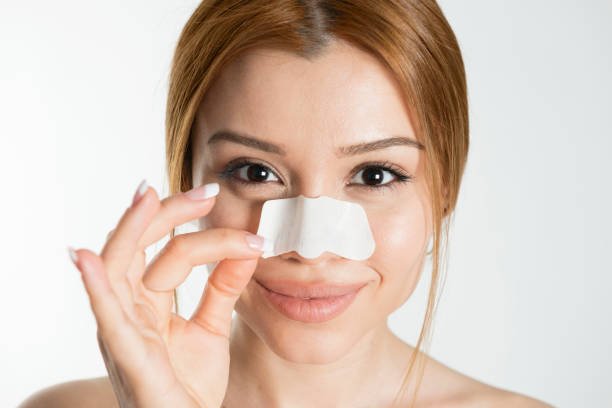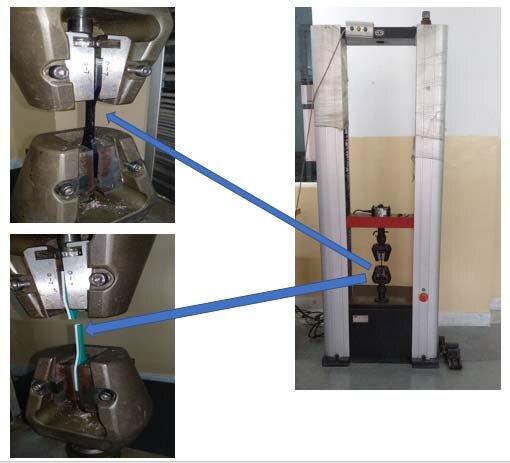Introduction to Nose Strips
What Are Nose Strips and How Do They Work?
Nose strips, often made from a flexible, adhesive material, are designed to improve breathing by lifting and opening the nasal passages. Typically, these strips contain a spring-like band that, when bent across the nose, lifts the sides of the nasal passages to enhance air flow. Clinical studies, such as one published in the Pulmonary Medicine, show that nasal strips can increase nasal passage openness by up to 31%, significantly improving airflow and reducing snoring in individuals without obstructive sleep apnea.
Consumer Preferences
Consumer preferences have evolved, and research from market analyses reveals that comfort is equally prioritized over effectiveness. Therefore, manufacturers have responded by integrating softer, skin-friendly materials that adhere securely without causing irritation.

Feedback from consumers suggested that nose strips in enhancing sleep quality and reducing nasal congestion. According to a recent Consumer Health Digest survey, 82% of users report improved sleep, and 75% find significant relief from nighttime nasal congestion. These statistics underline the practical benefits that nose strips offer to everyday users, making them a staple in many households for managing minor breathing difficulties during sleep.
Nose strips are a kind of nasal dilators. To find out more about the substitution of nose strips, please read: Nasal Dilator: Types, Uses, Benefits Explained.
Materials Used in Nose Strip Manufacturing
Overview of Common Fabrics Used in Nose Strips
The primary materials used in nose strips include porous non-woven fabrics, woven cotton, and synthetic polymers which are chosen for their breathability and flexibility. Non-woven fabrics are favored for their ability to conform to the nose’s shape while providing sufficient airflow. Woven cotton offers a softer touch against the skin, which is crucial for products worn during sleep. Synthetic polymers, on the other hand, are selected for their elastic properties and durability, making them ideal for nose strips designed for active use or prolonged wear.
Technical Specifications and Cost Comparison
Nose strips are typically crafted from a combination of materials that balance skin-friendliness with effective nasal congestion relief. The main types include:
Porous Polyethylene: Often used in basic strips for its lightweight and porous nature, allowing the skin to breathe.
Rayon Non-Woven Fabric: Preferred for its softness and absorbency, making it ideal for sensitive skin types.
Nylon Mesh: Provides extra strength, often used in “extra-strength” nose strips for enhanced lift and durability.
Woven Cotton: Offers superior comfort and natural hypoallergenic properties.
Synthetic Blends (Polyester and Spandex): Used in specialized strips that require stretch and adherence to maintain placement overnight or during physical activities.

Tensile testing/ Elasticity is among the most important attribute of a nose strip.
Detailed Technical Specifications and Cost Analysis
To help you understand what to look for during your inqury, this section provides a more nuanced look into the cost, elasticity, fabric density, and durability of each material, now including a variety of strengths and specific applications:
| Material Type | Durability | Cost per Unit | Elasticity | Density | Typical Use |
|---|---|---|---|---|---|
| Porous Polyethylene | Low | $0.05 – $0.07 | Low | Very Low | Single-use, Basic |
| Rayon Non-Woven Fabric | Medium | $0.08 – $0.10 | Medium | Low | Sensitive Skin |
| Nylon Mesh | High | $0.12 – $0.15 | High | Medium | Extra Strength |
| Woven Cotton | Medium | $0.15 – $0.20 | Low | High | Comfort, Long Wear |
| Synthetic Blends | Very High | $0.18 – $0.25 | Very High | Medium | Athletic, Overnight |
FIY, Fonitaniya™ offers extra durable and strong nose strips made of cotton and elastane. Click the link Fonitaniya™ Nose Strip to find out!
Market Analysis of the Nose Strip Industry
The nose strip industry has seen significant evolution in consumer preferences and technological advancements. This section delves into the current market trends, demographic insights, and the impact of innovations on sales and product development.
Current Market Trends and Consumer Demographics
Recent market analyses indicate a growing demand for nose strips among consumers dealing with allergies, sleep apnea, and those seeking solutions for better sleep quality and better athletic performances. The demographic inclined towards these products typically ranges from young adults in their twenties experiencing allergies to middle-aged individuals concerned with sleep quality. Data suggests that approximately 60% of users are between the ages of 25 and 45, with a nearly equal split between male and female consumers.

Dealing with allergies, sleep apnea and improving sleep quality, athletic performances are the major incentives for consumers.
Sales Performance and Market Penetration
Sales data from the past five years show a steady increase in the adoption of nose strips, with an annual growth rate of around 7%. The penetration in markets has been particularly strong in urban areas where pollution and allergen levels are higher. The U.S. market currently leads with a 35% share, followed by Europe at 25%, and Asia-Pacific emerging as a fast-growing sector with a 20% market share, driven by increasing awareness and disposable incomes.
In the recent market, magnetic nasal strips is an extremely fast-growing products. At Fonitaniya™, we also have patent magnetic nasal strips, just click in the link magnetic nasal strips to find out more.
Marketing Strategies for Nose Strips
Effective Marketing Techniques for Different Target Audiences
Companies will need to employ a variety of marketing techniques tailored to specific demographic and psychographic characteristics. For families, marketing might focus on the health benefits and safety of using nose strips to ensure a good night’s sleep, free from breathing interruptions. For athletes, the emphasis could be on performance enhancement and recovery, showcasing how nose strips can improve airflow and oxygen intake during high exertion activities.

Marketing strategies for nose strips should bifurcate into families use and athletic use based on the audiences.
Digital Marketing and Social Media Impact
Social media platforms offer a direct line to target consumers with engaging content that demonstrates product use and effectiveness. Influencer partnerships have proven particularly effective, as endorsements from trusted figures can influence purchasing decisions. Companies are leveraging these platforms to launch targeted ad campaigns, utilize SEO strategies to improve search engine visibility, and engage with customers through interactive content.
Digital marketing allows for real-time analytics and feedback, enabling companies to adapt quickly to market responses and refine their approaches accordingly. This responsive and dynamic marketing landscape demands that companies stay agile and informed about the latest digital trends to maintain competitive edges.
Conclusion: Navigating the Future of Nose Strips
The nose strip market has shown dynamic growth, driven by advancements in materials science and a growing awareness of respiratory health benefits. The increasing popularity of biodegradable options reflects a consumer shift towards sustainable products. Companies should focus on continuous innovation in product design and materials to cater to this green trend. Additionally, expanding into emerging markets can offer new growth avenues, as these regions exhibit increased awareness and adoption of health and wellness products.
At Fonitaniya, a leading manufacturer in the FMCG sector, we specialize in developing high-quality nose strips among other specialized tapes. Our commitment to quality and innovation ensures that our products not only meet but exceed the needs of our diverse global clientele. Through strategic innovation and targeted marketing efforts, Fonitaniya aims to maintain a robust market presence, pushing forward a future where health and sustainability are interconnected. Our dedication to delivering superior products is matched by our drive to uphold customer satisfaction and adapt to the ever-changing market dynamics, making us a trusted partner in your health and wellness journey.

FAQs
How do nose strips help reduce snoring?
Nose strips expand nasal passages to improve airflow, which can reduce or eliminate snoring.
What should you check before using a nose strip?
Always ensure your skin is clean and dry to help the nose strip adhere better.
Can anyone use nose strips for sports?
Yes, athletes often use nose strips to breathe more easily during intense activities, enhancing their performance.
How often can you use a single nose strip?
Nose strips are designed for single use; using one more than once reduces its effectiveness.
Are there any side effects from using nose strips?
Rarely, some might experience slight skin irritation or an allergic reaction to the adhesive.
Can you wear nose strips all day?
Yes, but it’s best to follow the specific product’s guidelines regarding duration.
How do you remove a nose strip without hurting your skin?
Gently peel the strip off from the edges towards the center after loosening it with a bit of warm water.




